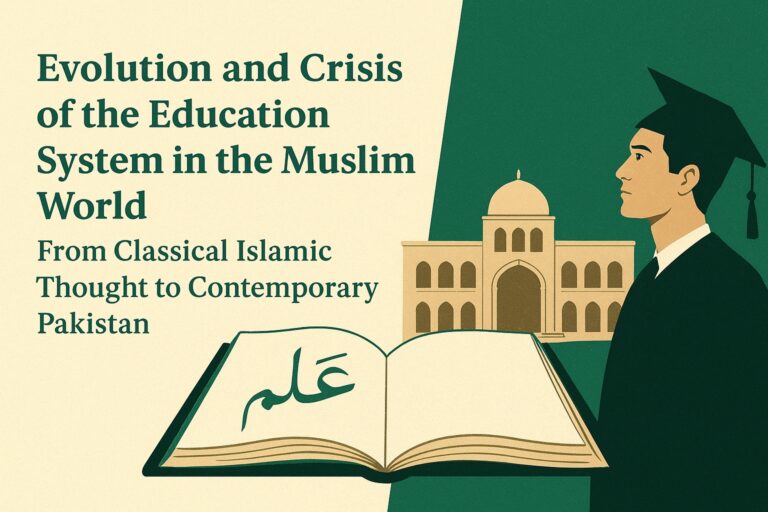Pakistan: Governance and Corruption Diagnostic Report. The IMF 2025 Report Everyone Saw Coming (But Still Ignored)
IMF Report 2025: Déjà Vu or Wake-Up Call for Pakistan?
Pakistan: Governance and Corruption Diagnostic Report. The IMF 2025 Report Everyone Saw Coming (But Still Ignored). If Pakistan’s economy were a cricket team, the latest IMF report would sound like a disappointed coach’s halftime speech:
“You’ve got talent, you’ve got heart, but you keep dropping the same catches.”
https://mrpo.pk/why-flattery-feels-good-but-does-us-harm/
The International Monetary Fund’s 2025 Country Report on Pakistan isn’t exactly bedtime reading, but it’s the kind of report that should jolt everyone awake. Behind its calm diplomatic phrasing lies a message that’s part tough love, part déjà vu, and entirely urgent.
The IMF didn’t use emojis, but if it did, this one would come with a grimacing face .😬
High-Level Summary Technical Assistance Reports
Pakistan: Governance and Corruption Diagnostic Report
This Governance and Corruption Diagnostic (GCD) was conducted at the request and with the support of the Government of Pakistan to identify and analyse governance weaknesses and corruption vulnerabilities that undermine economic performance and reform efforts. The diagnostic focused on federal-level governance in five core state functions: fiscal governance, market regulation, financial sector oversight, anti-money laundering and combating the financing of terrorism (AML/CFT), and rule of law, and also considered the strength and effectiveness of anticorruption institutions and approaches to address corruption risks. The findings reveal persistent and widespread corruption risks embedded in a heavily state-dominated economy that operates with complex regulatory environments, weak institutional capacities, fragmented oversight, with ineffective and inconsistent accountability and constrained rule of law. These factors collectively constrain private sector development and public sector effectiveness. The report provides an integrated set of recommendations aimed at achieving concrete and visible progress through strengthening institutional integrity, enhancing transparency, improving consistency and reliability of the enforcement of rules, and fostering coordination across agencies to support sustainable economic growth and public trust.

The IMF’s 2025 Report, Same Script, Sharper Dialogue
The report projects Pakistan’s GDP growth hovering around 2.3–2.5%, which, in simpler terms, means “barely crawling forward.” Inflation, though expected to cool slightly, remains high enough to sting every grocery shopper. The fiscal deficit is still wide, external debt is still growing, and reserves are, as usual, under stress.
The IMF’s tone? Think of a teacher grading a student’s essay for the fifth year in a row, “I see improvement, but why does it feel like déjà vu?”
For those who glaze over at financial jargon, here’s the translation:
- Fiscal consolidation → learning to live within your means.
- Primary deficit → the money left (or not) after paying your basic bills.
- External financing gap → the hole you can’t fill without borrowing more.
In short, Pakistan’s economy is stabilising on paper, but it’s still on economic life support.
The Usual Suspects, Familiar Warnings
Here’s the awkward truth: almost everything the IMF pointed out has been said before, not once, but repeatedly.
For over a decade, local economists and journalists have been sounding the same alarms.
- Fiscal indiscipline.
- Chronic circular debt in the power sector.
- Tax collection that targets the compliant, not the capable.
As Business Recorder bluntly put it in a February 2025 editorial:
“Reform fatigue is Pakistan’s silent crisis , we’ve normalized dysfunction.”
Meanwhile, Profit Pakistan Today offered a memorable jab:
“We’ve been warned about circular debt since Musharraf’s time , and counting.”
And economist Dr Hafiz Pasha said what many policymakers won’t:
“You can’t keep taxing the taxed and expect different results.”
IMF wants Pakistan to cut subsidies, widen the tax net, and reduce its deficit.
Ordinary Pakistanis, meanwhile, are wondering how to “tighten their belts” when many no longer have belts left to tighten.
What’s Actually New This Time
So, if all this sounds like an economic rerun, what is new in 2025?
A few things stand out, not in numbers, but in tone.
- Political Instability as a Direct Economic Risk.
For the first time, the IMF explicitly names political uncertainty as a key factor undermining reform.
Translation: the economy isn’t just suffering from bad math, it’s suffering from bad politics. - Data Transparency and Statistical Credibility.
The report politely, but pointedly, hints that Pakistan’s official data doesn’t always match reality.
Or as one analyst at Dawn put it, “When your thermometer’s broken, you can’t claim the fever’s gone.” - Climate Resilience = Economic Policy.
The IMF now treats climate adaptation as central to economic planning, not a side issue.
Pakistan’s 2022 flood disaster made this hard to ignore. - Digital Taxation and Green Growth.
The Fund urges Pakistan to modernise tax systems through tech and promote climate-linked investment , both progressive themes absent in earlier reports.
In short: same advice, new attitude. The gloves are coming off.
Three Years of Squeeze, The Everyday Agonies
It’s not just an abstract economy that’s hurting; it’s people’s daily lives.
In the past three years, Pakistan’s middle and lower-income families have been fighting inflation like an unending boxing match, only the opponent never tires.
- Electricity bills doubled, sometimes tripled, despite hours of load-shedding.
- School fees soared, pushing private education out of reach.
- Food prices turned the humble daal and atta into luxury items.
- Fuel costs became the quiet thief of paychecks.
Meanwhile, real wages stagnated, and small businesses, once Pakistan’s economic backbone, buckled under taxes and energy costs.
As Dawn columnist Khurram Hussain observed:
“It’s remarkable how resilient Pakistanis are. They’re exhausted, not defeated — but resilience isn’t an economic policy.”
Policies of the Present Regime, Between Hope and Hardship
Since taking charge, the current government has walked a tightrope between IMF compliance and political survival.
On paper, reforms are “on track.” In practice, citizens feel like the guinea pigs of fiscal experiments.
Some key moves since 2023 include:
- Increased energy tariffs to meet IMF benchmarks, hitting households hardest.
- Privatisation plans for state-owned enterprises, with limited transparency.
- Reduced development spending, slowing infrastructure growth.
- Heavy indirect taxation, deepening inequality.
Supporters call it “necessary stabilisation.” Critics call it “economic suffocation.”
Either way, the policy choices have shifted pain to the public while shielding entrenched elites.
The Brain Drain, A Silent Exodus
Perhaps the most tragic subplot of Pakistan’s economic story is its quiet exodus of talent.
Over 1.2 million Pakistanis officially left the country for work between 2022 and 2024, the highest in years. Many were not labourers, but doctors, engineers, IT experts, and academics.
Why?
Because frustration became unbearable.
“You can’t build a future where every ambition feels like a liability,” said a 29-year-old software engineer leaving Karachi for Dubai.
Even universities feel the vacuum; brilliant graduates vanish faster than the government can draft “youth retention” policies.
The IMF report’s silence on brain drain is notable because every lost mind is lost GDP potential.
Pakistan’s most precious export now isn’t textiles or rice, it’s people.
When Multinationals Pack Up Their Bags
Adding insult to injury, several multinational companies have either scaled down operations or exited altogether.
- Procter & Gamble downsized manufacturing.
- Shell Pakistan exited after 75 years.
- Toyota and Suzuki suspended production for months due to import restrictions.
For investors, this signals uncertainty. For locals, it means job losses, confidence erosion, and fading optimism about the country’s global competitiveness.
When corporations that once bet on Pakistan start leaving, the message to others is clear: the risk isn’t worth the return.
Between Tough Love and Tough Luck, The Local Reactions
Reactions in Pakistan’s media were, unsurprisingly, divided.
- Business Recorder agreed the IMF’s frustration is justified, saying Pakistan’s “chronic fiscal indiscipline has left little room for sympathy.”
- Geo News called the prescriptions “harsh but necessary,” warning that short-term pain may be the only route to long-term relief.
- Profit Pakistan Today quipped that “every government blames the IMF, but the mirror is the real problem.”
- Economist Dr Khaqan Najeeb went further:
“Structural reforms aren’t optional; they’re existential. Pakistan’s issue isn’t policy advice , it’s policy execution.”
The People Behind the Percentages
It’s easy to drown in numbers and forget the faces behind them.
But macroeconomics always lands in someone’s kitchen.
- The Karachi shopkeeper who’s changed his price tags so many times he’s stopped printing them.
- The middle-class parent is wondering how tuition fees doubled without a raise in salary.
- The small exporter whose profits shrink every time the rupee slides.
Inflation isn’t a statistic. It’s the sigh when you check your grocery bill and wonder if you accidentally bought gold.
Pakistan in the Global IMF Playbook
Pakistan isn’t alone in this script.
Sri Lanka, Egypt, and Ghana have walked this road, bailouts, reforms, and public backlash.
The pattern is painfully familiar: loans, austerity, partial reforms, repeat.
The IMF insists Pakistan break this cycle through “institutional maturity”, a polite way of saying “stop hitting snooze on reform alarms.”
Investor confidence now hinges on credibility, not promises.
As one Express Tribune columnist wrote:
“We’ve treated every IMF program like a rescue mission instead of a roadmap.”
From Lecture to Lesson Plan, Practical Takeaways
For policymakers:
- Stop treating reforms like homework you can copy from last year.
- Digitise the tax system, depoliticise tariffs, and publish transparent fiscal data.
For citizens:
- Understand that economic pain is real — but change needs participation, not just outrage.
- Push for local accountability and smarter, tech-driven governance.
For businesses:
- Diversify beyond imports and energy-intensive industries.
- Invest in value-added exports, green manufacturing, and fintech-led growth.
Because, as one economist put it:
“The IMF can lend dollars, but only Pakistan can lend itself discipline.”
Conclusion — Hope Isn’t a Strategy, But It’s a Start
Every great comeback starts with an honest scoreboard.
Pakistan has heard these warnings before, but hearing and listening aren’t the same thing.
Maybe this time, the IMF report isn’t a scolding, it’s an invitation.
To finally move from survival to strategy.
To build an economy that grows not on borrowed money, but on earned trust.
Because in the end, numbers don’t change until mindsets do.
FAQ
Q1. What does the IMF’s 2025 report say about Pakistan’s economy?
The report highlights weak growth, inflationary pressures, and reform delays, urging stronger fiscal discipline and data transparency.
Q2. What’s new compared to previous IMF reports?
A sharper tone and stronger links between political instability, transparency, and economic risk.
Q3. How have the last three years affected ordinary Pakistanis?
Surging inflation, rising utility costs, stagnant wages, and job losses, leading to growing frustration and record brain drain.
Q4. Why are multinationals exiting Pakistan?
Currency instability, import restrictions, and regulatory uncertainty have made the business environment increasingly unviable.
Would you like me to now create the metadata (SEO title, meta description, slug, and social snippet text) so it’s fully ready for publication on your blog, LinkedIn, or news platform?


